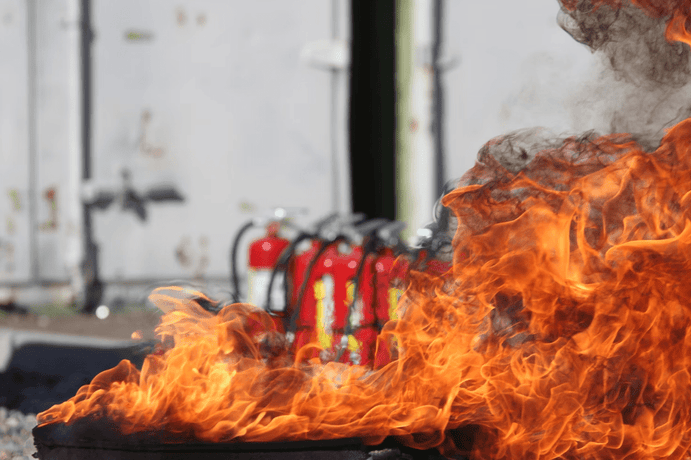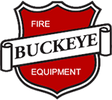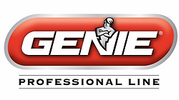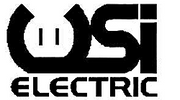- No products in the cart.
The Best Fire Extinguisher for Home Use: The Wholesale Homes Guide
23
Apr
Having the right fire extinguisher in your home can quite literally mean the difference between life and death – or, at the very least, the loss of valuable property. It’s the first line of defense when a potential fire emergency sparks in your home, and buying the right one is not simply about purchasing a safety tool; it’s an investment in peace of mind.
But you already know that. If you’ve come this far, what you’re probably wondering is, what’s the best fire extinguisher for home use? Does it matter if I live in an apartment or a single-family home? What about if I need fire protection for my kitchen and my garage, do I need different fire extinguishers for each?
We get it – you have a lot of questions! And we’ve got the answers.
Welcome to the Wholesale Homes Guide to the best fire extinguisher for your home, where we’ll cover the four different types of extinguishers, look at how to use fire extinguishers, how to properly store them, and where you can purchase quality UL-certified fire extinguishers online.
What Are the 4 Types of Fire Extinguishers?
The first step in choosing the best fire extinguisher for home use is determining what type of fire extinguisher you need. There are four main types, each designed for a specific type of fire:
Water Fire Extinguishers: Water extinguishers work by cooling the fire by soaking the enflamed materials and reducing temperatures below the ignition point. These can only be used on fires involving common combustibles like wood, paper and cloth, or what’s known as “Class A” fires.
Dry Chemical Fire Extinguishers: A dry chemical fire extinguisher is the most common and utilitarian type of extinguisher. They can be used on Class A fires, as well as both Class B fires (involving flammable and combustible liquids) and Class C fires (blazes that involve energized electrical equipment). Because of this, these types of fire extinguishers are known as ABC extinguishers.
Carbon Dioxide (CO2) Fire Extinguishers: Suitable for Class B and C fires only, CO2 extinguishers displace oxygen or remove the heating element of the fire. They are especially effective on electrical fires and those involving flammable liquids, such as gasoline, but cannot be used for Class A fires.
Wet Chemical Fire Extinguishers: Great for the kitchen, wet chemical fire extinguishers contain a solution that forms a soap-like film that smothers the fire and prevents re-ignition. Ideal for fires involving cooking oils and fats.
How to Use Fire Extinguishers in 4 Easy Steps
There are a few things to consider before using a fire extinguisher, factors such as making sure the fire is contained, whether you have a clear escape route, and if the fire extinguisher you have is appropriate for the type of fire you’re dealing with (e.g. grease, electrical, etc.). Once you’ve assessed the situation, the process for using a fire extinguisher can be broken down into four basic steps, easily remembered by the acronym PASS:
Pull the pin at the top of the extinguisher to discharge the extinguisher.
Aim the nozzle or hose at the base of the fire where the fuel source is.
Squeeze the handle to release the extinguishing agent, making sure to keep the extinguisher upright and aimed at the base of the fire.
Sweep the nozzle or hose from side to side until the fire appears to be out. Repeat the final three steps as needed.
How to Store Fire Extinguishers
In order for a fire extinguisher to maintain its effectiveness, there are a few proper ways to store it in a safe and convenient way. Consider:
- Storage Location: Make sure your fire extinguisher is placed in a location that is both easily accessible and visible. Target a placement near exits and escape routes without any furniture or other objects obstructing your ability to grab the device in an emergency quickly. For wall-mounted fire extinguishers, shoot for a height of 5-6 off the ground; if the device is portable, a designated cabinet or stand is ideal.
- Temperature: Fire extinguishers stored in extreme temperatures – anything hotter than 120°F or colder than 40°F – can cause the fire extinguisher to become damaged or inoperable.
- Moisture: Likewise, excessive moisture can cause the fire extinguisher to corrode or rust, weakening the metal and potentially reducing its effectiveness.
Where to Buy Fire Extinguishers Online
So now that you have a better idea of what kind of fire extinguisher you may need, and how to properly store it, the next obvious question is where you can purchase a fire extinguisher online. Luckily, there are several good online outlets that carry a wide variety of extinguishers. Wholesale Homes, for instance, has an extensive selection of reliable fire extinguishers that are both affordable and UL-certified, products such as the Amerex Dry Chemical Fire Extinguisher and Buckeye ABC Hand Held Fire Extinguisher, both of which can handle almost any fire you might experience in your home.
We hope you found our guide to finding the best (and right!) fire extinguisher for home use helpful, and if you have any additional questions about which type of extinguisher you might need, or you want to know more about an individual product or manufacturer, feel free to reach out to Wholesale Homes for more info!





































